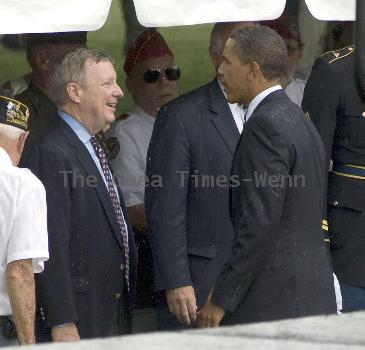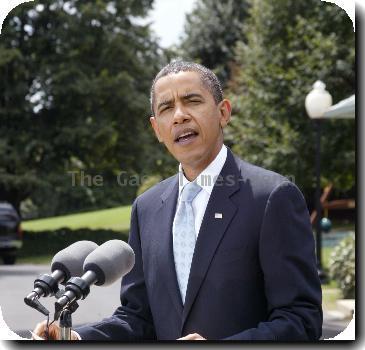Spill chief says capped well is holding up under pressure; drilling of relief well is on track
By Frederic J. Frommer, APTuesday, July 20, 2010
Spill chief says the capped well is holding up
NEW ORLEANS — The government’s oil spill chief tried to tamp down fears Tuesday that BP’s capped well is buckling under the pressure, saying that seepage detected along the sea floor less than two miles away is coming from an older well no longer in production.
Retired Coast Guard Adm. Thad Allen also said at least five leaks have been discovered around the well machinery, but he dismissed them as “very small drips” — “not unlike an oil leak you might have in your car.”
Over the past few days, since a 75-ton cap was placed over the mile-deep well to keep the oil bottled up inside, BP and government engineers have been watching closely to see whether the well would hold tight or show signs of rupturing under the pressure. A rupture could cause a bigger and harder-to-control disaster.
Allen has granted BP repeated 24-hour extensions to keep the cap in place, as long as the company monitors the well scrupulously.
Meanwhile, the end game in the three-month crisis appeared to be drawing closer, with BP vice president Kent Wells saying the drilling of the relief well — necessary to permanently plug up the well — is on track. He said crews hope to drill sideways into the blown-out well and intercept it at the end of July.
At that point, they will begin the kill procedure — pumping mud and cement into the hole deep underground to seal it up once and for all. BP said that stage could take anywhere from five days to a couple of weeks.
“Everything’s looking good,” Wells said. “The relief well is exactly where we want it. It’s pointed in the right direction, and so we’re feeling good about that.”
BP wants to leave the cap on in the meantime. At one point, Allen wanted instead to relieve the pressure by opening up the cap and siphoning oil up to ships on the surface, but he has relented in the past few days. Opening up the cap would have required allowing millions of gallons to gush into the sea again for a few days while the plumbing was hooked up.
In the meantime, engineers are considering shooting drilling mud down through the cap to increase the chances that the attempt to kill the well deep underground will succeed.
The seepage detected from the sea floor briefly raised fears that the well was in danger. But Allen said another well is to blame. The seepage is closer to the older well than to the one that blew out, Allen said. Also, he said, “it’s not unusual to have seepage around the old wells.”
There are two wells within two miles of BP’s blowout off the Louisiana coast in the Gulf of Mexico. One has been abandoned and another is not in production. Around 27,000 abandoned wells in the Gulf aren’t checked for leaks, an Associated Press investigation showed this month.
The BP-leased Deepwater Horizon rig exploded April 20, killing 11 workers and touching off one of America’s worst environmental crises. The well has spewed somewhere between 94 million and 184 million gallons into the Gulf. BP said the cost of dealing with the spill has now reached nearly $4 billion.
In other spill-related developments Tuesday:
— Meeting with President Barack Obama at the White House, British Prime Minister David Cameron turned down a request for a new investigation into Scotland’s release of a man convicted in the 1988 bombing of a jetliner over Lockerbie. BP has disputed allegations that it pressed for the man’s release because it was seeking access to Libya’s oil fields.
— BP said it is selling some oil fields and other major holdings in the U.S., Canada and Egypt to Apache Corp. for $7 billion to help cover the costs of the oil spill. Some or all of the proceeds will go toward a $20 billion victims compensation fund that BP agreed to last month under pressure from the Obama administration.
— At a hearing in suburban New Orleans, one of the ill-fated rig’s drilling supervisors told Coast Guard investigators that the rig’s crew didn’t stop drilling or properly notify regulators when a hydraulic leak was discovered in a critical safety device weeks before the blast. Well site leader Ronald Sepulvado testified that he and others aboard the rig believed the leak wouldn’t prevent the device, called a blowout preventer, from functioning properly.
Frommer reported from Washington. Associated Press writers Phuong Le and David Dishneau in New Orleans, Michael Kunzelman in Kenner, La., and Ben Feller in Washington contributed to this report along with AP energy writer Chris Kahn in New York.
Tags: Accidents, Barack Obama, Corporate Crime, Energy, Environmental Concerns, Louisiana, New Orleans, North America, United States






